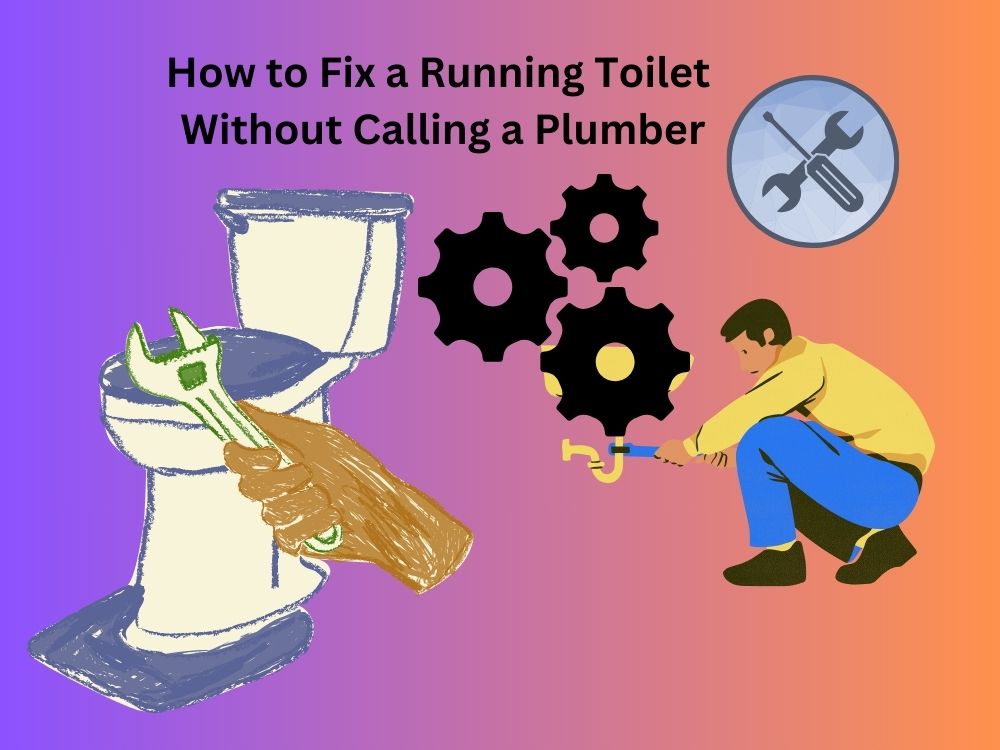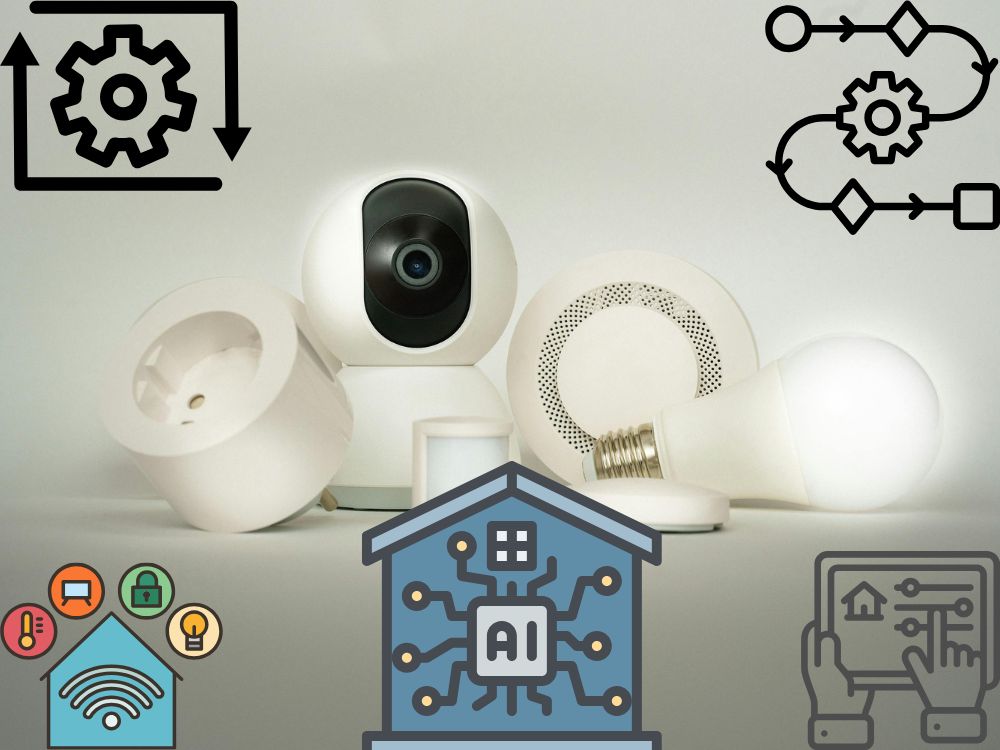Ever walked into your bathroom, only to hear the sound of water running long after you flushed? Annoying, right? A running toilet isn’t just an irritation—it’s a silent water-waster that can spike your water bill without you even realizing it. The good news? You don’t need a plumber to fix it. In this guide on how to fix a running toilet without calling a plumber, we’ll walk you through quick, easy steps to troubleshoot and repair the issue. From replacing a faulty flapper to adjusting the float, you’ll learn how to stop that endless trickle and get your toilet back in working order. No fancy tools, no plumbing experience required—just a few minutes and a little DIY spirit. Let’s get started!

The Problem: A Toilet That Won’t Stop Running
Imagine this—you flush, wash your hands, and leave the bathroom, but minutes later, you still hear water running. You jiggle the handle, hoping it stops, but the sound lingers. That’s when you realize your toilet isn’t just making noise—it’s wasting gallons of water and slowly inflating your utility bill.
A running toilet is more than just a minor inconvenience. Left unfixed, it can waste hundreds of liters of water per day, leading to costly bills and unnecessary water consumption. The challenge? Most people assume fixing a toilet requires professional plumbing skills. But in reality, the solution is often simple.
Before you reach for the phone, let’s go step by step to fix a running toilet without calling a plumber. Whether it’s a faulty flapper, a misaligned float, or an issue with the fill valve, you’ll learn how to troubleshoot and solve it in no time.
Caution:
Before attempting any toilet repairs, always turn off the water supply to avoid accidental flooding. Handle internal components with care, as fragile parts like the flapper and fill valve can break easily. Avoid using excessive force when adjusting or replacing parts to prevent further damage. If the issue persists despite multiple fixes, consult a professional to prevent water wastage and costly repairs. Never flush foreign objects or chemical drain cleaners that can corrode pipes and worsen the problem.

How to Fix a Running Toilet Without Calling a Plumber: Step-by-Step DIY Guide
Dealing with a running toilet can be frustrating, but you don’t have to rely on a plumber to fix it. In most cases, the problem is caused by a faulty flapper, a misaligned float, or a worn-out fill valve—issues that can be easily fixed with a few simple steps. This guide will walk you through how to fix a running toilet without calling a plumber, saving you time, water, and unnecessary repair costs.
Step 1: Turn Off the Water Supply
Before fixing the issue, the first thing you need to do is stop the constant water flow. If the water keeps running while you work, any adjustments inside the tank won’t make a difference. Thankfully, this step is simple and takes just a few seconds.
How to Do It:
- Locate the shutoff valve. It’s usually found on the wall or floor near the base of the toilet.
- Turn the valve clockwise until it stops. This will cut off the water flow to the tank.
- Flush the toilet once to drain most of the water inside the tank.
Dos:
- Turn the valve gently to avoid damaging it, especially if it hasn’t been used in a long time.
- Check if the valve is stuck. If it’s too tight, use a cloth or pliers for a better grip.
- Keep a towel or small bucket nearby in case of minor leaks.
Don’ts:
- Don’t force the valve too hard if it’s stuck, as this can break it.
- Don’t skip flushing after shutting off the water. This helps reduce mess when working inside the tank.
- Don’t ignore signs of leakage around the valve, as it may indicate a bigger plumbing issue.
Now that the water is off, you’re ready to move on to the next step: opening the tank and identifying the problem.
Step 2: Remove the Toilet Tank Lid and Inspect the Components
Now that the water supply is off, it’s time to take a closer look inside the tank. Most running toilet issues come from faulty or misaligned internal components. By removing the lid and inspecting the tank, you can quickly identify what’s causing the problem.
How to Do It:
- Carefully lift the toilet tank lid with both hands and place it on a flat, safe surface. The lid is often made of porcelain and can break easily.
- Look inside the tank and check for any obvious issues. Common signs of trouble include:
- A flapper that isn’t sealing properly
- A float that’s stuck or misaligned
- A fill valve that isn’t shutting off
- Gently move the float up and down to see if it’s functioning freely.
- Press down on the flapper to check if it creates a proper seal. If the water stops running when you do this, the flapper is likely the issue.
Dos:
- Place the tank lid on a towel or soft surface to avoid cracks.
- Take a picture of the tank’s interior before making any changes. This helps you remember how everything was positioned.
- Check for any mineral buildup or debris inside the tank that may be interfering with the components.
Don’ts:
- Don’t drop or place the tank lid on a hard surface—it can crack or shatter.
- Don’t force any parts inside the tank. If something is stuck, assess the issue before applying pressure.
- Don’t forget to observe how each component moves when you flush. This will help in diagnosing the problem correctly.
Once you’ve inspected the components, you should have a better idea of what’s causing the toilet to keep running. Next, we’ll move on to fixing the most common issue—the flapper.

Step 3: Check and Fix the Flapper
The flapper is one of the most common culprits behind a running toilet. It’s the rubber seal at the bottom of the tank that lifts when you flush, allowing water to flow into the bowl. If the flapper isn’t sealing properly, water will continuously leak into the bowl, causing the toilet to keep running.
How to Do It:
- Check if the flapper is properly aligned over the flush valve opening. If it’s crooked or loose, adjust it so it sits evenly.
- Press down on the flapper with your hand. If the water stops running, the flapper isn’t sealing properly.
- Inspect the flapper for wear and tear. If it’s cracked, warped, or covered in mineral deposits, it needs to be replaced.
- To replace the flapper:
- Turn off the water supply if you haven’t already.
- Disconnect the flapper chain from the flush handle.
- Remove the old flapper from its hinges and attach a new one.
- Reconnect the chain, ensuring it has a little slack but isn’t too loose.
- Turn the water supply back on and flush to test if the issue is resolved.
Dos:
- Use a high-quality rubber flapper for better durability.
- Adjust the flapper chain to prevent it from being too tight or too loose.
- Clean the flapper with vinegar if it has mineral buildup instead of replacing it immediately.
Don’ts:
- Don’t reuse a damaged flapper—it will likely continue leaking.
- Don’t make the chain too tight, as it can prevent the flapper from sealing completely.
- Don’t ignore any visible cracks or warping on the flapper, as these are clear signs it needs replacing.
If fixing the flapper solves the issue, great! If not, the problem might be with the float, which regulates the water level inside the tank. Let’s move on to adjusting it.
Step 4: Adjust the Float to Control the Water Level
If the flapper isn’t the issue, the next suspect is the float. The float controls how much water refills in the tank after each flush. If it’s set too high, excess water flows into the overflow tube, causing the toilet to run continuously. Adjusting it can help stop the water from constantly draining.
How to Do It:
- Identify the type of float in your tank. There are two common types:
- A ball float (a large ball attached to a metal rod)
- A cup float (a plastic cylinder that moves up and down the fill valve)
- If your toilet has a ball float:
- Gently bend the metal rod downward to lower the water level.
- If your toilet has a cup float:
- Locate the adjustment screw on top of the fill valve.
- Turn the screw counterclockwise to lower the float and reduce the water level.
- Flush the toilet and observe whether the water stops running after the tank refills.
- Repeat small adjustments if necessary until the water stops just below the overflow tube.
Dos:
- Adjust the float in small increments to avoid overcorrecting.
- Ensure the float moves freely and isn’t stuck against the side of the tank.
- Check for any buildup or debris around the float mechanism that may affect its movement.
Don’ts:
- Don’t lower the float too much, or the toilet may not flush properly.
- Don’t force the adjustment screw or bend the metal rod aggressively, as this can cause damage.
- Don’t ignore a broken float mechanism—if it doesn’t adjust properly, replacing it is the best solution.
If adjusting the float stops the toilet from running, you’re all set! If the issue persists, the fill valve itself may need attention. Let’s move on to that next.
Step 5: Inspect and Replace the Fill Valve
If adjusting the float and replacing the flapper didn’t fix the issue, the next step in how to fix a running toilet without calling a plumber is checking the fill valve. The fill valve controls how much water refills in the tank after each flush. If it’s faulty or clogged, your toilet will keep running, wasting gallons of water every day. Fortunately, replacing it is an easy DIY fix.
How to Do It:
- Turn off the water supply to the toilet and flush to empty the tank.
- Place a towel or container under the tank to catch any leftover water.
- Locate the fill valve on the left side of the tank—it connects to the water supply line.
- Unscrew the nut securing the fill valve using an adjustable wrench and carefully remove it.
- Insert the new fill valve, adjust its height according to the manufacturer’s instructions, and secure it in place.
- Reconnect the water supply, turn it back on, and let the tank fill. Check if the running water issue is resolved.
Dos:
- Choose a high-quality replacement fill valve for long-term durability.
- Adjust the fill valve height properly to maintain the right water level.
- Test the toilet multiple times after installation to ensure it functions correctly.
Don’ts:
- Don’t over tighten the nut when securing the new fill valve—it can crack the tank.
- Don’t ignore any unusual noises like hissing or whistling, as these could indicate another issue.
- Don’t forget to check the supply line for leaks after replacing the fill valve.
By following this step, you’re one step closer to fixing a running toilet without calling a plumber. If the problem still isn’t solved, the overflow tube might need to be checked next.
Step 6: Check and Adjust the Overflow Tube to Fix a Running Toilet Without Calling a Plumber
If replacing the fill valve didn’t solve the issue, the next step in how to fix a running toilet without calling a plumber is inspecting the overflow tube. This tube prevents the tank from overfilling, but if it’s too high or damaged, water will continuously flow into the bowl, causing the toilet to run non-stop.
How to Do It:
- Remove the toilet tank lid and locate the overflow tube—it’s the vertical tube in the center of the tank.
- Check if the water level is above the top of the overflow tube. If it is, the tube might be too tall, or the fill valve might be overfilling the tank.
- If needed, trim the overflow tube slightly with a hacksaw so that it sits about an inch below the flush handle opening.
- Adjust the fill valve’s float level so that the water stops about half an inch below the top of the overflow tube.
- Flush the toilet and observe if the running water issue is resolved.
Dos:
- Ensure the overflow tube is not cracked or damaged, as this can cause constant water leakage.
- Adjust the water level carefully to prevent unnecessary water waste.
- Test the toilet after making adjustments to confirm that the issue is fixed.
Don’ts:
- Don’t cut the overflow tube too short—it should still be tall enough to regulate the tank’s water level.
- Don’t ignore water spilling into the overflow tube, as it means the fill valve needs further adjustment.
- Don’t skip checking for leaks after adjusting the overflow tube.
By ensuring the overflow tube is properly adjusted, you should now have completely fixed your running toilet without calling a plumber. If the problem still persists, there may be a deeper issue with the plumbing that requires professional attention.
Step 7: Final Checks and Testing to Fix a Running Toilet Without Calling a Plumber
Now that you’ve adjusted or replaced key toilet components, it’s time to perform a final check to ensure the problem is completely resolved. The last thing you want is to think the issue is fixed, only to find the toilet running again after a few hours.
How to Do It:
- Turn on the Water Supply: Slowly turn the water supply back on and allow the tank to fill.
- Observe the Fill Cycle: Watch how the water refills in the tank. The fill valve should shut off when the water reaches the correct level—about half an inch below the overflow tube.
- Listen for Running Water: If you still hear water running after a few minutes, check for leaks around the fill valve, flapper, or supply line.
- Perform Multiple Flush Tests: Flush the toilet a few times to ensure all components are functioning properly.
- Check for Silent Leaks: Add a few drops of food coloring to the tank and wait 10–15 minutes without flushing. If the color appears in the bowl, there’s still a leak, and you may need to adjust or replace a component again.
Dos:
- Double-check all connections and fittings for leaks.
- Test the toilet several times to confirm that the issue is fully resolved.
- Keep an eye on your water bill over the next few weeks to ensure there’s no unnoticed water waste.
Don’ts:
- Don’t assume the problem is fixed after one flush—always perform multiple tests.
- Don’t ignore minor leaks, as they can worsen over time.
- Don’t forget to replace the toilet tank lid carefully after finishing your checks.
By completing these final tests, you should now have successfully fixed a running toilet without calling a plumber. Not only have you saved money on repairs, but you’ve also prevented unnecessary water waste.
Fixing a running toilet without calling a plumber isn’t as complicated as it seems. With a few simple adjustments—checking the flapper, adjusting the float, or replacing a worn-out fill valve—you can stop unnecessary water waste and save money on repairs. The key is to diagnose the issue step by step, test your fixes, and ensure there are no lingering leaks. By handling this yourself, you not only avoid costly service calls but also gain the confidence to tackle similar household repairs in the future.
Bonus Tips & Things to Remember
- Regular Maintenance Prevents Major Repairs – Inspect the flapper, fill valve, and float every few months to catch small issues before they turn into costly problems.
- Avoid Using Harsh Chemical Cleaners – While drain cleaners may seem like a quick fix, they can damage rubber and plastic components inside the tank, leading to leaks and wear.
- Adjust the Water Level Properly – Ensure the float is set so the water level stays about an inch below the overflow tube to prevent continuous running.
- Always Keep a Toilet Repair Kit Handy – Having extra flappers, chains, and a fill valve on hand can save time and money when issues arise.
- Turn Off the Water Supply for Emergencies – If you can’t fix a running toilet immediately, shutting off the water valve under the tank will prevent unnecessary water waste.
- Use Food Coloring to Detect Leaks – Add a few drops of food coloring to the tank and wait 10–15 minutes. If the color appears in the bowl without flushing, there’s a leak that needs fixing.
- Choose High-Quality Replacement Parts – Cheap components wear out quickly. Investing in durable toilet parts ensures fewer repairs in the long run.
FAQs on How to Fix a Running Toilet Without Calling a Plumber
1. How do I stop a running toilet fast?
To stop a running toilet immediately, open the tank lid and push the flapper down to create a proper seal. If that doesn’t work, lift the float to stop the water flow. For a quick fix, turning off the water supply under the tank will prevent further waste until you troubleshoot the issue.
2. What is the most common cause of a running toilet?
A worn-out or misaligned flapper is the most frequent reason. Over time, flappers lose their seal, causing water to leak into the bowl continuously. Other culprits include a faulty fill valve or an improperly adjusted float.
3. Is a running toilet expensive in the long run?
Yes, a running toilet can waste hundreds of gallons of water daily, significantly increasing your water bill. In some cases, it can add thousands of extra rupees or dollars per year to your utility costs if left unfixed.
4. Why is my toilet still running after replacing all parts?
If your toilet is still running even after replacing the flapper, fill valve, and float, check for the following:
- The flapper chain might be too tight, preventing the flapper from sealing completely.
- The overflow tube might be cracked or too short, allowing continuous water flow.
- The water level might be set too high, causing constant overflow into the tube.
5. How do I fix a toilet fill valve issue?
To fix a faulty fill valve:
- Turn off the water supply using the valve under the toilet.
- Flush to drain the tank, then remove the old fill valve.
- Install the new valve, ensuring it’s set to the right height.
- Turn the water back on and adjust the float to control the water level.
A properly working fill valve stops unnecessary refilling and prevents a running toilet.
6. What happens if a toilet runs all night?
If a toilet runs overnight, it can waste dozens of gallons of water and inflate your water bill. Long-term, it can also cause higher humidity in the bathroom, leading to mold growth and potential damage to flooring or walls.
7. Can I fix a clogged toilet without a plunger?
Yes! Try hot water and dish soap to break down the clog, or use a toilet auger if the blockage is deep. Baking soda and vinegar can also help dissolve minor clogs.
8. How do I stop my toilet from making noise after flushing?
If your toilet makes a constant hissing or gurgling sound, the fill valve might be loose or faulty. Tighten any loose parts, check for a stuck flapper, or replace the fill valve if necessary.
9. How do I unclog a badly blocked toilet when nothing works?
If plunging, hot water, and DIY solutions fail, try a toilet auger to break up the blockage. If that doesn’t work, the clog might be deeper in the plumbing, requiring a professional plumber.
10. Who is responsible for fixing a running toilet in a rented property?
In most rental agreements, the landlord is responsible for plumbing repairs, including a running toilet. However, if the tenant caused the damage (e.g., flushing inappropriate items), they might be liable for the repair costs.





